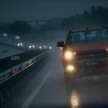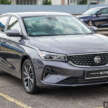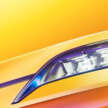The use of hazard lights is permitted only in emergencies, said Bukit Aman traffic investigation and enforcement (JSPT) director Datuk Mohd Azman Ahmad Sapri, according to Kosmo.
The matter of using hazard lights in Malaysia is still vague as there are no clear and specific guidelines on hazard light usage, however in the event that the driver of a vehicle needs to stop the vehicle in limited visibility and they are unable to maintain control of the vehicle, hazard lights are for the purpose of warning other road users immediately behind, and for them to take evasive action, Mohd Azman said.
In addition to hazard light use during heavy rain, they are often seen to be used in convoy for weddings, funerals, motoring clubs or when a vehicle is being towed, according to the article.
“The use of hazard lights on a moving vehicle will confuse other road users especially in heavy rain. [In these conditions, it is difficult to see if a vehicle is stopped or is moving, and makes it very dangerous if a vehicle that is thought to be moving, turns out to have broken down or been stranded in the middle of the road,” the JSPT director said.
In October 2021, the Royal Malaysia Police (PDRM) JSPT previously issued a reminder on the proper use of hazard lights, and the latest statement from the Bukit Aman JSPT director is timely as the end of year will see more rainfall. Instead of using hazard lights when driving, use the dipped main beam to better mark one’s presence on the road to avoid confusing and adding unnecessary stress for other motorists.
In this time of the year when more rainfall also means more instances of reduced visibility on the road, remember to take the usual precautions – increase the distance between your vehicle and the one ahead of you to give yourself more room to react.
Also, try to avoid the far-right-hand-side lane during or after very heavy rain, as there may be standing water on the lane that can be kicked up from the opposite direction, and because the right-hand-side lane tends to be of faster-moving traffic, water on this side is likely to be kicked up the highest, obscuring more of one’s windscreen and thus increasing the duration of temporary ‘blindness’.
Be mindful of standing water hazards in one’s own lane, too, and ensure that one’s tyres are in optimum condition for use; they are, after all the only intended points of contact between a vehicle and the road. Last but not least, drive to the conditions, increase following distance between vehicles and reduce speed when rain gets heavy.
The post Hazard light use when driving in rain prohibited: Police appeared first on Paul Tan’s Automotive News.




